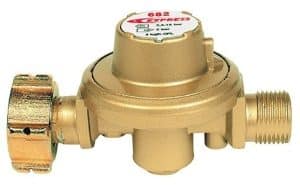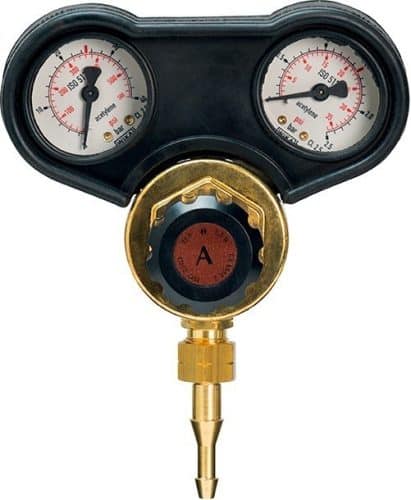The safety regulator is the key part of the assembly between the gas source and your soldering iron, as it allows you to modulate the pressure at the cylinder outlet. Its good working order is essential for working, as well as for your safety. Here’s how to identify problems with your safety regulator.
How the safety valve works
 The safety regulator is a precise tool that allows you to adjust the pressure of the gas entering your soldering iron. It lowers the pressure exerted at the cylinder outlet, but should not be used to shut off the supply.
The safety regulator is a precise tool that allows you to adjust the pressure of the gas entering your soldering iron. It lowers the pressure exerted at the cylinder outlet, but should not be used to shut off the supply.
You need precision and consistency to do quality work. For high-precision work, you should choose a safety regulator with a pressure gauge that displays the pressure figures to the nearest unit. Note that the pressure of propane gas is higher than that of butane gas.
The regulator is not only found on soldering irons, but also on boilers, stoves, barbecues, planchas, diving tanks, etc.
How to check the condition of your safety regulator
To avoid any safety issues, you should make sure that your regulator is still in good condition and not wait for a malfunction before changing it. Its longevity depends on how you use it and how often you use it. Also consider the weather conditions in which you use it; it will wear out faster if you work on roofs all year round than if you just use it for occasional small jobs.
Check the seals:
Check that the seals are in good condition and that they are doing their job properly. When you assemble your components, you must tighten them firmly, but without forcing them too much, otherwise you will crush the joints, which will then no longer perform their function.
Check the spring and diaphragm
The spring and diaphragm are the weakest link in the safety regulator. They are even more fragile if you work in extreme hot or cold conditions. The cold, for example, tends to stiffen and weaken them.
If the spring and/or the diaphragm are defective, you will notice that the gas flow rate becomes unstable.
If your gas cylinder gets stuck in the safety position
If you can no longer weld because your gas cylinder is stuck in the safety position, it is probably the valve that is defective, but perhaps also the diaphragm and the spring. In this case, you have no choice but to change your safety regulator.
The condition of the hoses
The problem may be with your hoses, rather than your safety regulator. Check for cracks and test for leaks using soapy water. No bubbles should form.
Check your assembly
If you encounter a problem, start your assembly from the beginning. Start by connecting your soldering iron to your connecting pipe. Remember that it is screwed in counter-clockwise. Then connect the hose to the gas regulator.
If your device is new, you must remove the gas cylinder safety cap and the tamper-evident cap that covers the valve outlet. Attach the regulator to the valve, always turning counterclockwise.
Now that you are ready to arm the gas regulator, check your assembly for leaks by pouring soapy water over it.
